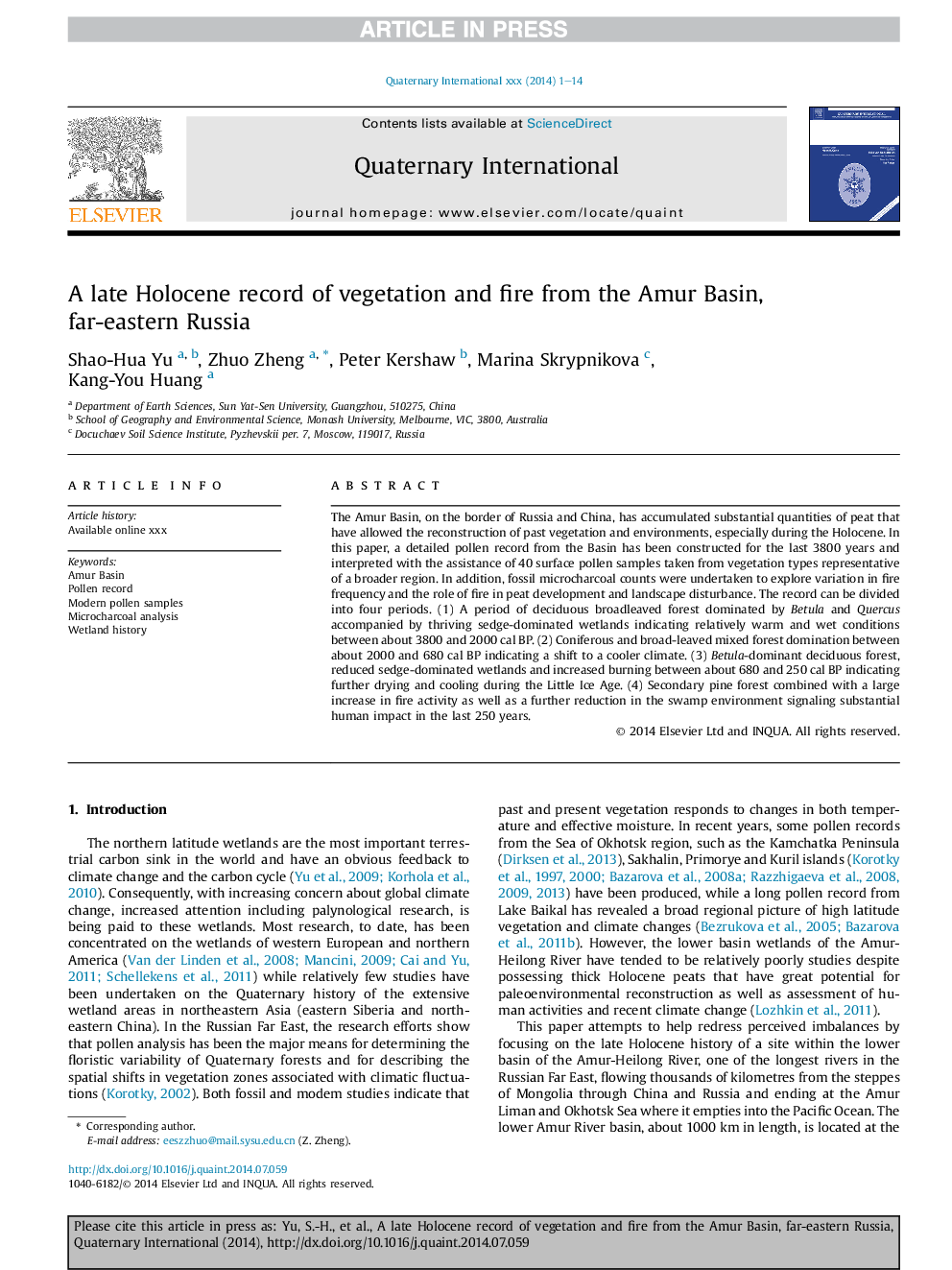| Article ID | Journal | Published Year | Pages | File Type |
|---|---|---|---|---|
| 5113452 | Quaternary International | 2017 | 14 Pages |
Abstract
The Amur Basin, on the border of Russia and China, has accumulated substantial quantities of peat that have allowed the reconstruction of past vegetation and environments, especially during the Holocene. In this paper, a detailed pollen record from the Basin has been constructed for the last 3800 years and interpreted with the assistance of 40 surface pollen samples taken from vegetation types representative of a broader region. In addition, fossil microcharcoal counts were undertaken to explore variation in fire frequency and the role of fire in peat development and landscape disturbance. The record can be divided into four periods. (1) A period of deciduous broadleaved forest dominated by Betula and Quercus accompanied by thriving sedge-dominated wetlands indicating relatively warm and wet conditions between about 3800 and 2000 cal BP. (2) Coniferous and broad-leaved mixed forest domination between about 2000 and 680 cal BP indicating a shift to a cooler climate. (3) Betula-dominant deciduous forest, reduced sedge-dominated wetlands and increased burning between about 680 and 250 cal BP indicating further drying and cooling during the Little Ice Age. (4) Secondary pine forest combined with a large increase in fire activity as well as a further reduction in the swamp environment signaling substantial human impact in the last 250 years.
Keywords
Related Topics
Physical Sciences and Engineering
Earth and Planetary Sciences
Geology
Authors
Shao-Hua Yu, Zhuo Zheng, Peter Kershaw, Marina Skrypnikova, Kang-You Huang,
